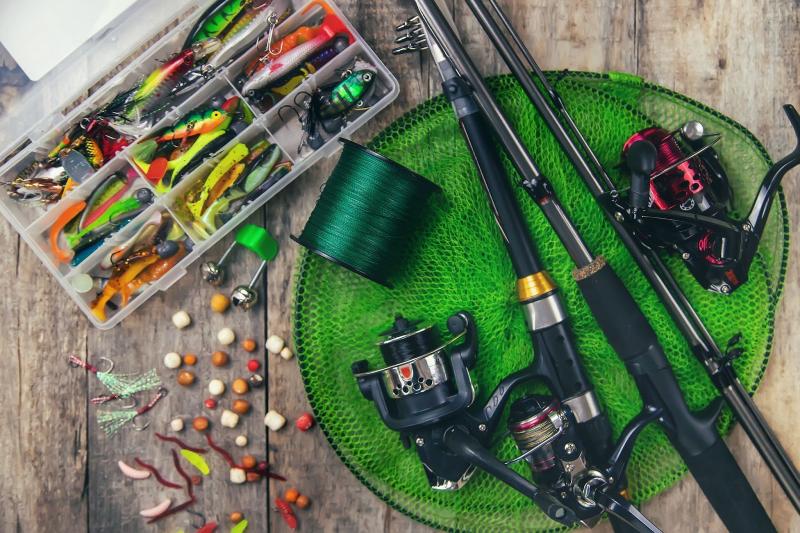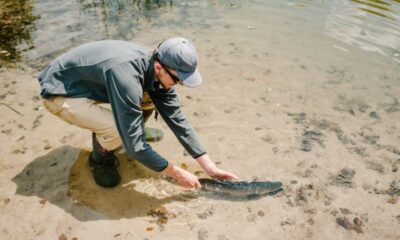Gadget
Eugene Preyl Discusses Essential Fishing Gear: A Comprehensive Guide for Beginners

Are you new to the fishing world and overwhelmed by the variety of gear available? Look no further. In this comprehensive guide, Eugene Preyl will walk you through all the essential fishing gear you need to get started.
What is Fishing Gear?
Fishing gear refers to all equipment, attire, and tools used for catching fish. This includes fishing rods, reels, lines, hooks, lures, sinkers, and various accessories like tackle boxes, fishing vests, and nets. Knowing what fishing gear consists of is crucial for beginners to have the right gear for a successful fishing experience.
What are the Essential Fishing Gear Items?
Fishing Rod
A fishing rod is a necessary tool for angling, consisting of several vital components:
- Handle: Opt for a comfortable grip material such as cork or foam.
- Reel seat: Ensure compatibility with the chosen reel type.
- Guides: Check for proper alignment and smoothness.
- Blank: Consider the material and action best suited for your fishing style.
- Power and action: Choose based on the targeted fish species and preferred fishing technique.
Fishing Reel
- There are different types of fishing reels: Spinning, baitcasting, fly, and ice reels, designed for specific fishing styles.
- Consider the gear ratio, bearings, and materials to ensure the reel suits the targeted fish species and fishing technique.
- Proper maintenance is critical: Regularly clean, oil, and store the reel to extend its lifespan and maintain optimal performance.
Fishing Line
- Choose the right fishing line for your specific type of fishing and target fish species.
- Consider the line’s material, diameter, and weight capacity to ensure it suits the fishing conditions.
- Carefully spool the line to prevent tangles and maintain proper tension when attaching it to the reel.
- Regularly check the line for any signs of wear, nicks, or abrasions and replace them if necessary.
- Dispose of old fishing lines responsibly to prevent any harm to the environment.
Hooks
- When selecting hooks, you must consider the size and type of fish.
- Choose the correct hook size for the specific fish species you intend to catch.
- Make sure to match the hook size to the bait you use for optimal results.
Sinkers
- Choose the right type: Different sinkers, such as split shot, egg, or pyramid, suit varying water conditions and fish behaviors.
- Consider weight: Select sinkers of the appropriate weight to ensure that your bait or lure reaches the desired depth.
- Material matters: Lead sinkers are common but can pose environmental risks. Consider using eco-friendly alternatives such as tungsten or steel sinkers.
- Secure properly: Ensure that sinkers are correctly attached to the line to prevent them from slipping during casting or retrieval.
Bobbers
- Select the appropriate size and weight of the bobber based on the targeted fish species and water conditions.
- Attach the bobber to the fishing line at the desired depth using the provided clips or threading the line through the central hole.
- After attaching the bobber, add the bait and cast the line into the water.
- Observe the bobber for any movement, indicating fish activity or a potential bite.
- Once a fish is hooked, reel in the line carefully while keeping an eye on the bobber’s movement.
Lures
- Know the fish species you’re targeting to select the right lure.
- Consider the water conditions to determine the appropriate lure type, such as surface lures for calm water.
- Choose the correct color and size based on the prevalent prey in the area.
- Experiment with different retrieval techniques to find the most effective lure action.
- Ensure proper maintenance and storage to prolong the lifespan of your lures.
What are the Different Types of Fishing Gear?
Each type offers unique benefits and techniques, from the versatile spinning gear to the specialized ice fishing gear.
Spinning Gear
Spinning gear is a versatile fishing equipment suitable for various fish species and angler skill levels.
- Choose a spinner appropriate for the targeted fish species and the desired casting weight.
- Select a spinning reel with a smooth drag system and a sufficient line capacity.
- Pick a suitable fishing line based on the size of the target fish and the fishing environment.
- Learn the proper casting techniques to utilize the effectiveness of the spinning gear fully.
Baitcasting Gear
- Understand the Basics: Familiarize yourself with the baitcasting reel, which is mounted on top of the rod and requires a proficient thumb technique to release the line smoothly.
- Practice Proper Technique: Master the thumb release to avoid backlash, ensuring accurate and controlled casting.
- Choose Appropriate Gear: Select the right baitcasting rod and reel, based on the specific type of fishing and target species.
- Maintain and Clean: Regularly lubricate the reel, check for debris, and keep the baitcasting gear dry to prolong its lifespan.
Fly Fishing Gear
- Choose the right fly rod weight and length based on the fish type and the water body’s size.
- Select a suitable fly reel with a smooth drag system to match the weight of the rod.
- Pick the appropriate fly line based on the fishing conditions and the targeted fish species.
- Ensure that you use the correct flies that imitate the natural insects or baitfish in the area.
Ice Fishing Gear
- Ice Fishing Gear: It is specialized equipment designed for fishing in frozen bodies of water, including ice augers, ice fishing rods, and ice fishing shelters.
- Augers: Essential for drilling holes in the ice surface to access the water underneath.
- Fishing rods: Shorter than traditional rods, customized for small, confined spaces.
- Shelter: Protection from the cold and wind, enhancing the fishing experience during harsh weather conditions.
How to Properly Maintain and Care for Fishing Gear?
Proper maintenance and care for fishing gear ensures its longevity and functionality.
Rinse with Fresh Water
- Clean all fishing gear components thoroughly with fresh water to remove salt, sand, and debris.
- Pay special attention to the fishing reel, line, and hooks to prevent corrosion and damage.
- Dry the rinsed gear before storing it to avoid mildew or rust.
- Regularly inspect and maintain the gear to ensure longevity and optimal performance.
Dry Thoroughly
- After use, rinse the fishing gear with fresh water to remove salt or debris.
- Use a clean, dry cloth to dry the gear thoroughly, removing all moisture.
- Store the fishing gear in a cool, dry place to prevent mold or mildew growth.
Store Properly
- Remove any dirt, debris, or salt from the fishing gear.
- Ensure the gear is completely dry before storing it to prevent mold or corrosion.
- Store fishing gear in a cool, dry place away from direct sunlight to avoid damage.
-

 Business4 weeks ago
Business4 weeks agoSignificance of Small Business Saturday, an Annual Shopping Holiday
-

 Education3 weeks ago
Education3 weeks agoSwiss International University Acquires Four Prestigious Academies in Switzerland, Dubai, and Kyrgyzstan for $21.7 Million
-

 Startup3 weeks ago
Startup3 weeks agoAdam Strobel: Navigating the Shift from Tech Start-Up to Industry Leader
-

 Business4 weeks ago
Business4 weeks agoHow Efficiency is Key to a Small Business’s Customer Service Platform
-

 Tech2 weeks ago
Tech2 weeks agoAmazon is Expanding Its Strategic Partnership with Intuit by Providing Its Millions of Third-party Sellers with Intuit QuickBooks Software
-

 Health5 days ago
Health5 days agoFrom Hair Loss to Hair Restoration: How Men Are Tackling Balding in 2025
-

 Apps2 weeks ago
Apps2 weeks agoInstagram Music Marketing Strategies for Holiday Season
-

 Tech3 weeks ago
Tech3 weeks agoGoogle Launches the London AI Campus to Support Local Talent and Boost AI Education among Students
















